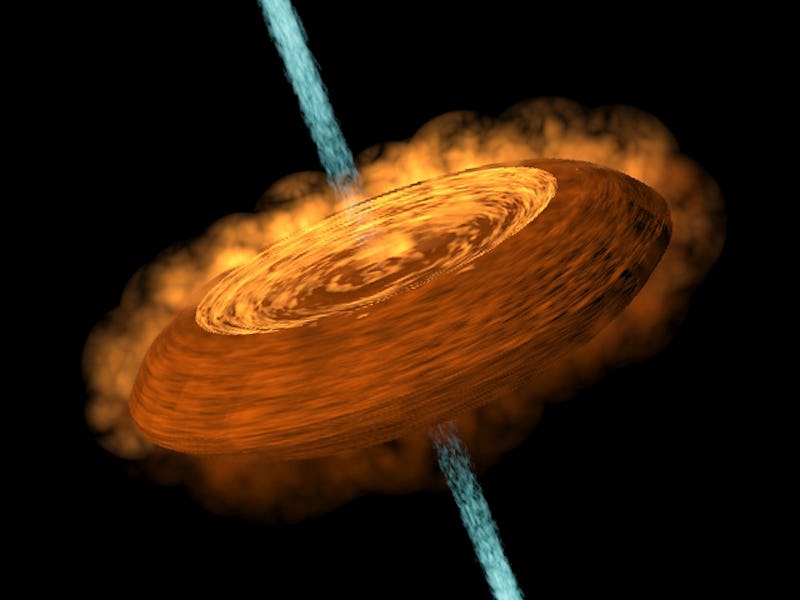Baby Stars Need "Space Hamburgers" to Grow Big and Strong

The concentration of stellar dust and gas sometimes seen around a star is known as an accretion disk, a boring name that scientists have wisely re-branded to “space hamburger.” Researchers just captured the first image of said hamburger around a young star, as opposed to the more mature stars that facilitate better conditions for returning detailed images. Appropriately, space hamburgers feed stars during their initial formation, but they’ve always been a bit of a mystery due to our inability to observe or model them around young stars. Now, we’re finally learning more about how they form — and by extension, more about how planets themselves form.
These disks are early indicators that a star system is beginning to produce planets. All that gas and dust will, over time, accrete into bigger and bigger clumps, which eventually become orbiting planets.
Efforts to model the hamburgers had seemed to indicate that a star’s magnetic field should throw off their development. Using the Atacama Large Millimeter/submillimeter Array (ALMA), the instrument turning up more than its fair share of cool space stuff these days, they observed dust emissions from a neighboring system whose star was just 40,000 years old, which in star-years is basically nothing. They found that this space hamburger was indeed able to form despite the presence of a strong magnetic field. A study detailing the research was published Wednesday in the journal Science Advances.
The star system itself is about 1,300 light-years away. It currently goes by HH212, having not yet benefitted from a sexy new name that will make people take notice in the manner of “space hamburger.” The hamburger itself, though, is enormous — it has a radius of about 60 astronomical units, or 60 times the distance between the Earth and the sun. It has a flared shape, as the researchers predicted through their new model.
Before ALMA, we didn’t have the technological capacity to capture detailed enough images of the various gases and dust grains within these accreted emissions. But now that we can, we can also better model the formation process and hopefully use the data to further our understanding of hamburgers around stars both young and old, which could in turn give us a better grasp of what makes a planet evolve in one way while its neighbor evolves in another. And as always, the more we understand about that, the more we can refine our search for potentially habitable worlds. And maybe, y’know, aliens.